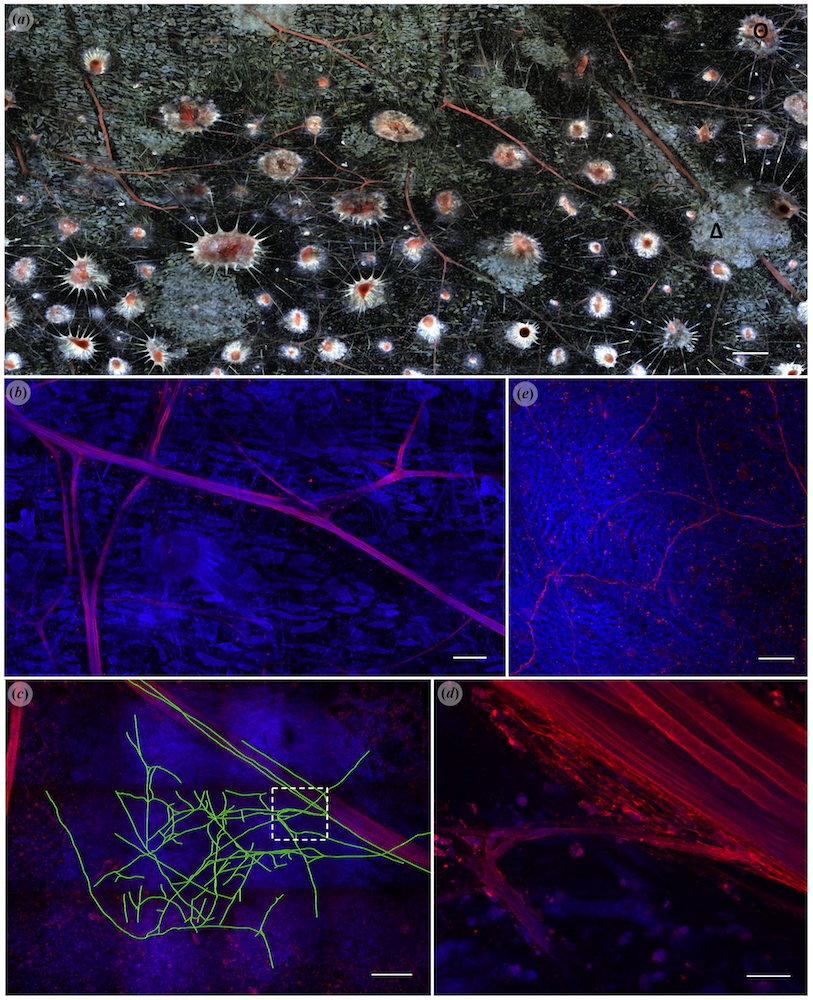Secret to Squid's Iridescent Rainbow Skin Discovered

For squid looking to sparkle, extra bling is only seconds away, thanks to a nerve network in the skin that allows these cephalopods to alter their iridescence — the first invertebrate creatures found to have this ability.
A new study finds that electrical stimulation of the nerves in squid skin changes the color and reflectance of tiny platelike structures called iridophores in the skin, allowing changes in hue from red all the way through the color spectrum to blue.
Oddly enough, despite their bright displays, these squid see only in black-and-white, deepening the mystery of why and how they pick a color from their array.
"The cool thing about it is that these animals are colorblind and yet they are producing a color signal," said study researcher Paloma Gonzalez Bellido of the Marine Biological Laboratory (MBL) at Woods Hole, Mass. "It's puzzling to us — even if it isn't for [squid to see], if it is for camouflage, how do you know you're doing this right? You can't see color." [See Video of the Squid Color Changes]
Creating iridescence
Squid, octopus and other cephalopods have amazing color-changing abilities thanks to specialized structures in their skin called chromatophores. But most squid species also have another set of specialized structures called iridophores, said study researcher Trevor Wardill, a research associate at MBL.
Unlike most colors we see, which are caused by pigments absorbing and reflecting certain wavelengths of light, iridescence is caused by structures interfering with the reflectance of light, causing the wavelengths to interact with one another and creating intense, almost metallic hues. Iridophores are made of complex stacked plates that cause this interference, Wardill told LiveScience.
Sign up for the Live Science daily newsletter now
Get the world’s most fascinating discoveries delivered straight to your inbox.
What wasn't clear is how the iridophores worked. By definition, iridescent color appears slightly different when viewed from different angles, Wardill said, so measuring iridescence changes is tricky.
To figure out the iridophores' secrets, the researchers carefully dissected the skin of dead longfin inshore squid (Doryteuthis pealeii). They traced the nerves of the skin and stimulated them electrically, finding that they could instigate progressive changes in skin color from the at-rest reddish state all the way through the color spectrum to blue.
Unlike the very fast changes seen in chromatophores, the alteration in iridophores moves more slowly, Wardill said, cycling through the rainbow from red to orange to yellow to green to blue over a period of about 15 seconds.
Color-changing mystery
The neural control for the color changes isn't a local reflex, Gonzalez Bellido said; it comes from the central nervous system. The next mystery to solve is how precisely the squid can pick and hold any given color, Wardill said. In the end, the researchers hope to understand how these cephalopods decide without the benefit of color vision what hues they need to display.
"The animals are actually developing color on the skin and they're doing it without pigments, and they potentially have the chance to be picking a certain color," Wardill said. "That would be very exciting, because there are not many examples from any animals that could pick a color and put it on so quickly."
The researchers report their work today (Aug. 14) in the journal Biological Sciences.
Follow Stephanie Pappas on Twitter @sipappas or LiveScience @livescience. We're also on Facebook & Google+.

Stephanie Pappas is a contributing writer for Live Science, covering topics ranging from geoscience to archaeology to the human brain and behavior. She was previously a senior writer for Live Science but is now a freelancer based in Denver, Colorado, and regularly contributes to Scientific American and The Monitor, the monthly magazine of the American Psychological Association. Stephanie received a bachelor's degree in psychology from the University of South Carolina and a graduate certificate in science communication from the University of California, Santa Cruz.









